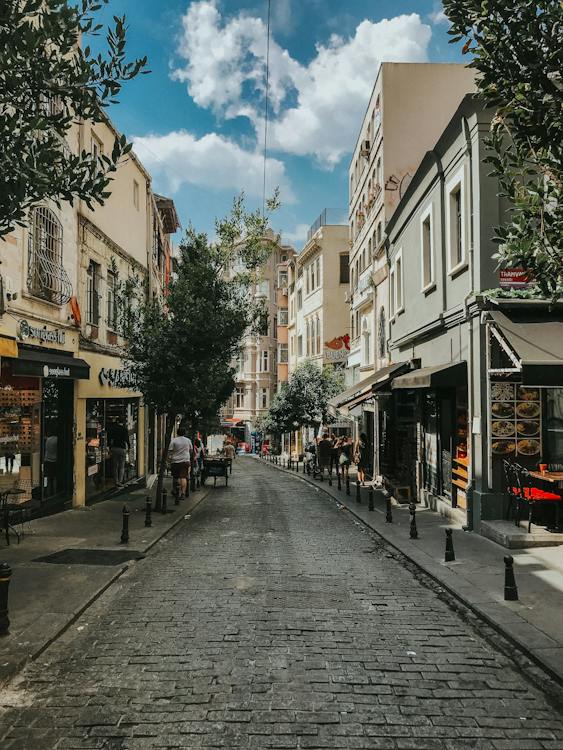Zichron Yaakov was one of the first new settlements founded by Romanian immigrants to Israel and is now a pretty town, with great views and a prestigious historical past.
The First Aliya & the founding of Zichron Yaakov
The first wave of modern Zionist immigration to the Land of Israel, known as the “First Aliyah”, began in 1882 and with it a new chapter in Jewish history.
In addition to being immigrants, the First Aliyah became known for the renewal of Jewish agricultural settlement in the Land of Israel. By the time the First Aliyah ended in 1904, 28 new Zionist pioneering communities, known as moshavot, had been established.
Zichron Yaakov was founded in 1882, and was the third such moshava to be established. Its first settlers were idealistic Zionist immigrants from Romania, who purchased 1,500 acres of land in the southern Carmel Hill country from a wealthy Christian Arab landowner.
As expected, the new immigrants suffered terribly during their first year of settlement in Zichron Yaakov. They were inexperienced in agriculture and didn’t understand local languages and customs. The difficulty of working the rocky soil led to failure of crops. Then an economic crisis ensued. Many contracted malaria, which was rampant in the nearby swamps. The disease took a heavy toll on the early pioneers, especially among their children, and led many of the settlers to leave before the year would end.
The moshava was rescued from collapse through the philanthropic intervention of the French Jewish banker Baron Edmond de Rothschild. Baron de Rothschild provided Zichron’s pioneers with much needed financial assistance and sent agricultural experts from France to teach them modern farming methods.
The Baron also sent choice French grape vines and instructors to help the new settlers set up a wine industry, which eventually grew into the still-functioning Carmel Winery. The new community was subsequently named Zichron Yaakov in memory of the Baron’s father James (Yaakov) de Rothschild.
Visiting Zichron Yaakov
Hameyasdim Street, part of which is a pedestrian mall, is still lined with some of Zichron’s original houses and embodies a great deal of charm.
The Nili Museum (Beit Aaronsohn), on 40 Hameyasdim Street, is actually a preserved former home of a Jewish-Zionist activist and his family. It reveals a fascinating chapter in Zichron Yaakov’s history: an espionage network, organized by local residents to spy on the Ottoman Turks for the British during World War I. Aaron Aaronsohn (1876 – 1919) was a botanist and agronomist who, along with his family, founded a spy ring named Nili. As you walk through those immaculately-preserved rooms and their furnishings, you will learn how Aaronsohn fought against crop-destroying locust plagues and organized and ran his network of underground intelligence at the same time (side note: Aaronsohn is also credited with the discovery with emmer, one of the oldest cultivated cereal plants). Guided tours are available both in Hebrew and English.
There is an interesting looking water tower next door at 44 Hameyasdim St.
The Ohel Yaakov Synagogue is located at the corner of Hameyasdim and Hanadiv streets. It was established by Baron de Rothschild, in memory of his father; construction completed in 1884. Apart from the fact that the synagogue was named after Baron de Rothschild’s father, Jacob Meyer de Rothschild, it also makes references to the biblical Jacob, who “dwelled in tents” as mentioned in the Book of Genesis. Thus, “Ohel Yaakov” means the “tent of Jacob.”
Zichron Yaakov has earned a reputation as a wine-making town. The Carmel Winery, founded in 1889, is located at the bottom of Hanadiv Street. It offers a brief audio-visual presentation and guided tours. The winery is one of the central features of Zichron Yaakov. There are now many wineries around Israel. But Carmel is among the pioneers in developing the industry and still provides a substantial proportion of Israeli wine production, as it also owns numerous vineyards across the country.
Also worth visiting is the First Aliyah Museum, located on 2 Hanadiv Street. It opened its doors to the public in 1999. It was established in memory of Moshe and Sara Arisohn, who were among the first Zionist pioneers. It features, among many others, short black-and-white vintage films that depict the struggles of the early Zionist settlers. These striking displays provide visitors a better understanding of what life was like for those brave pioneers who defiantly persevered in the face of many hardships.
As with any town, much of Zichron Yaakov is accessible for wheelchairs.
Zichron Yaakov sea views
For particularly nice views over the Mediterranean, try Yefe Nof Street on the western side of town or the top of Ben Gurion St. in the northern Givat Eden neighborhood. The latter offers good views of the Carmel Coast extending north to Haifa.
Ramat Hanadiv Memorial Gardens
A pleasure for the eyes and the nose, the exquisitely landscaped Ramat Hanadiv Memorial Gardens are located 1.5 kilometers south of Zichron Yaakov on Route 652. The fragrant, always blooming (plants are rotated to ensure flowers year round) gardens are dedicated to the memory of Baron Edmond de Rothschild and his wife, the Baroness Adelaide, who were re-interred here in 1954.
The garden were deliberately planted above a promontory, overlooking the Mediterranean Sea and Carmel Coast, surrounded by communities built with generous assistance from the Rothschild family and Baron Edmond in particular. A leisurely and easy walk through the gardens lasts approximately one hour.
Near to Zichron Yaakov
Zichron Yaakov is very close to Caesarea and slightly further away from the Carmel region and Haifa.
